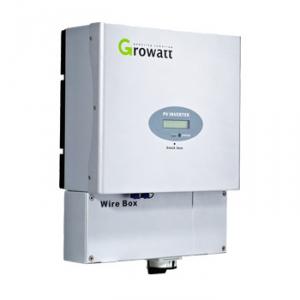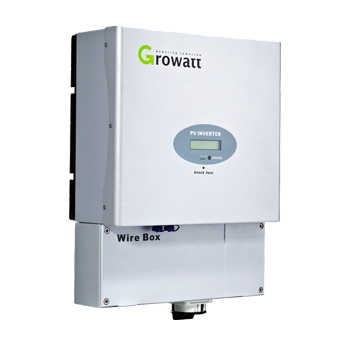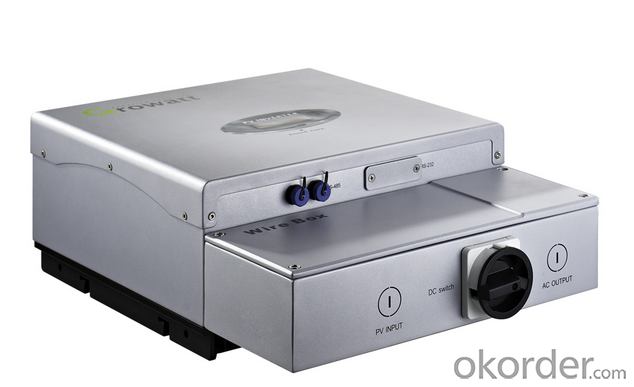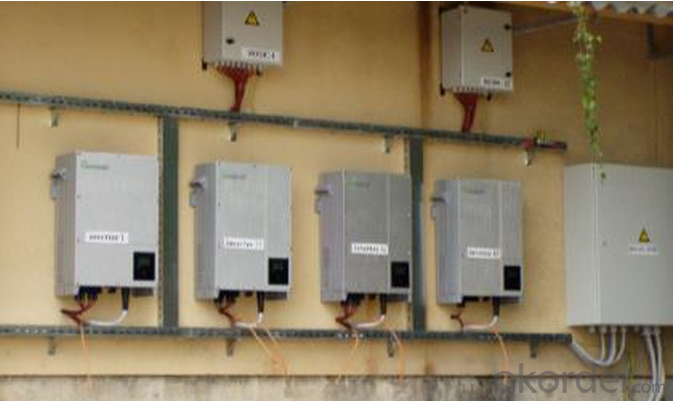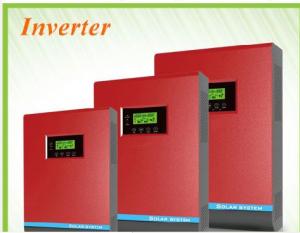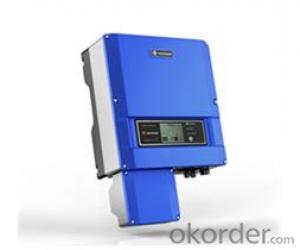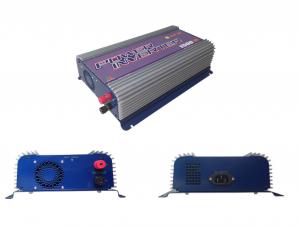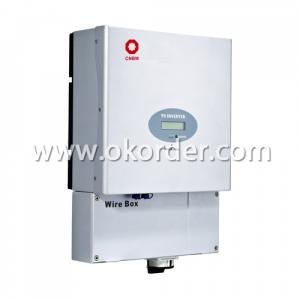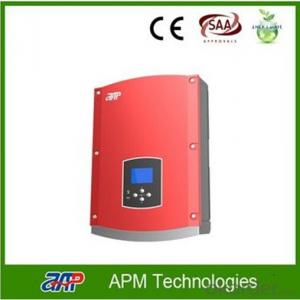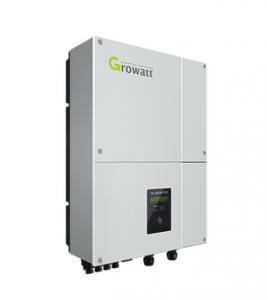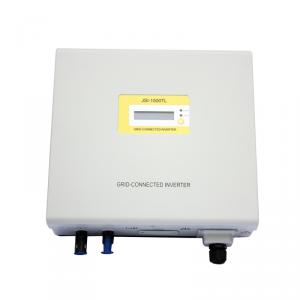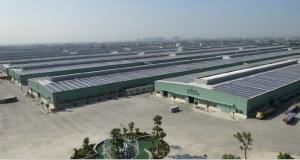Schuco Solar Inverter 1500w Solar Grid Tie Inverter Transformerless 1.5kw String Inverter ETL/FCA
- Loading Port:
- Shekou
- Payment Terms:
- TT or LC
- Min Order Qty:
- 10 pc
- Supply Capability:
- 100000 pc/month
OKorder Service Pledge
OKorder Financial Service
You Might Also Like
1500w solar grid tie inverter transformerless 1.5kw string inverter ETL/FCA
Solar inverter 1500TL-3000TL-US
Maximum efficiency of 97.5% and wide input voltage range
Internal DC Switch
Transformerless GT topology
Compact design
Bluetooth/ RF technology/ Zigbee/ Wi-Fi
Sound control
Easy installation
General Descriptions
Leading-Edge Technology, CE,TUV ,VDE , SAA,DK5940 Certicificates.
> Maximum efficiency of 97.8 % and wide input voltage range
> Internal DC STWTICH
> Transformerless H6 topology
> Compact Design
> MPPT control
> MTL-String
> RS485 RS432 bluetooth Technology
> Comprehensive Growatt warranty program
> Easy country configuration, easy installation
> Multi-language display
Communications
> RS485 /GPRS interfaces
> Computer monitoring software
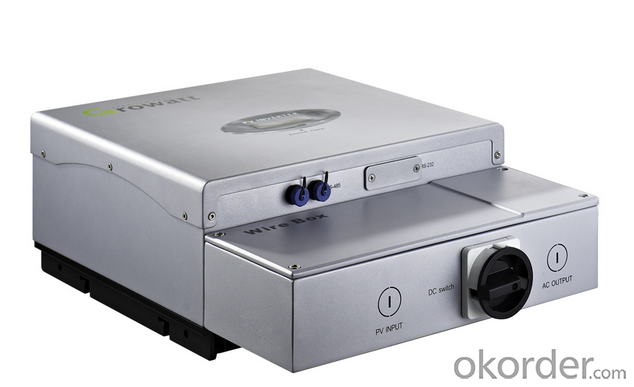
1500-US | 2000-US | 3000-US | |
| Inputdata | |||
Max.DCpower | 1800W | 2300W | 3200W |
Max. DC voltage | 450V | 500V | 500V |
Start Voltage | 150V | 150V | 150V |
PV voltage range | 100V-450V | 100V-500V | 100V-500V |
MPP voltage range(full load) | 120V-400V | 120V-450V | 120V-450V |
Max. input current of per MPP tracker | 12A | 14A | 17A |
Number of independent MPP | 1/1 | 1/2 | 1/2 |
Rated AC output power | 1500W@208Vac | 1800W@208Vac | 2500W@208Vac |
AC nominal voltage; range | Default:240V single phase, optional:208 single phase;183-228@208V,211-264V@240V | ||
Max. output current | 8A/7.8A | 9.7A/9.4A | 15A/14.2A |
AC grid frequency; range | 60Hz; 59.3-60.5Hz | 60Hz; 59.3-60.5Hz | 60Hz; 59.3-60.5Hz |
Power factor | 1 | 1 | 1 |
THDI | <3% | <3% | <3% |
Grid connection type | Single phase | Single phase | Single phase |
| Efficiency | |||
Max.efficiency | 97% | 97% | 97% |
| Protection Devices | |||
DC reverse polarity protection | yes | yes | yes |
DC switch rating for each MPPT | yes | yes | yes |
Output over current protection | yes | yes | yes |
Output over voltage | yes | yes | yes |
Ground fault monitoring | yes | yes | yes |
Grid monitoring | yes | yes | yes |
Integrated all-pole sensitive | yes | yes | yes |
| Generaldata | |||
Dimensions(W/H/D) in mm | 360/465/165 | 360/465/165 15.1KG | 360/465/165 |
| Features | |||
DC connection AC connection Display | Screw terminal Screw terminal LCD opt/opt/opt | Screw terminal Screw terminal LCD yes/yes/ opt/opt/opt | Screw terminal Screw terminal LCD yes/yes/ opt/opt/opt yes/opt |
| Certificates and Approvals UL1741, UL1998, IEEE 1547, CSA C22.2 No.107.1-1, FCC Part15(Class A&B) |
FAQ
1. Have any design tool and how to use it?
Shine Design is the system design software just for inverters, It can conduct installers to figure out panel numbers for a system, panel numbers for each string, and which inverter model is suitable for the system. Moreover, it can print a design report after input all necessary parameters, can calculate DC/AC wire wastage, annual generation, etc.
2. Does the inverter have monitoring solutions for residential system?
For small rating system, we have wired two monitoring solution (ShineNet via RS232 or RS485). (a) Local wireless monitoring solution (ShineVision via RF module communication) (b) Global wireless monitoring solution (WIFI module via WIFI network)
3. Do you have free solution for monitoring?
ShineNet is an inverter monitoring software run in Windows XP, Windows Vista, Windows 7 operating system. It can monitor inverter via RS232 (or RS232 convert to USB cable) and RS485 wire connection. Customers can purchase the cable locally to get the inverter monitored, it is simple.
- Q: Can a solar inverter be used with different types of tracking systems?
- Yes, a solar inverter can be used with different types of tracking systems. The function of a solar inverter is to convert the DC (direct current) generated by the solar panels into AC (alternating current) that can be used to power electrical devices. As long as the tracking system is capable of generating DC power from the solar panels, the solar inverter can be used to convert it into usable AC power.
- Q: How does a solar inverter convert DC to AC?
- A solar inverter converts direct current (DC) electricity generated by solar panels into alternating current (AC) electricity that can be used to power appliances and feed into the electrical grid. It does this by using a complex electronic circuit that first converts the DC power into high-frequency AC power. This high-frequency AC power is then transformed into the desired voltage and frequency of standard AC power using pulse-width modulation techniques. The converted AC power can then be utilized for various household or commercial electrical needs.
- Q: Can a solar inverter be used with a ground-mounted solar array?
- Yes, a solar inverter can be used with a ground-mounted solar array. The inverter is responsible for converting the direct current (DC) generated by the solar panels into alternating current (AC) that can be used to power household appliances or be fed back into the grid. Whether the solar array is ground-mounted or roof-mounted, the inverter's function remains the same.
- Q: What is the role of a power factor correction circuit in a solar inverter?
- The role of a power factor correction circuit in a solar inverter is to improve the power quality and efficiency of the inverter by reducing the reactive power and improving the power factor. This circuit ensures that the energy from the solar panels is effectively converted and delivered to the electrical grid, leading to a more stable and efficient operation of the solar inverter system.
- Q: How does a solar inverter handle voltage and frequency variations caused by load shedding?
- A solar inverter handles voltage and frequency variations caused by load shedding by constantly monitoring the grid conditions. When it detects a drop in voltage or frequency, it adjusts its output parameters accordingly to maintain a stable supply of electricity to the connected loads. This ensures that the devices receiving power from the solar inverter are not affected by the fluctuations in the grid caused by load shedding.
- Q: How does a hybrid solar inverter work?
- A hybrid solar inverter works by converting the direct current (DC) power generated by solar panels into alternating current (AC) power that can be used to power household appliances or be fed back into the grid. It also has the capability to store excess energy in batteries for later use during periods of low solar generation or power outages. This allows for efficient utilization of solar energy and provides backup power when needed.
- Q: Can a solar inverter be used in areas with unstable grid connections?
- Yes, a solar inverter can be used in areas with unstable grid connections. Solar inverters are designed to convert the DC power generated by solar panels into AC power that can be used to power electrical devices or be fed back into the grid. In areas with unstable grid connections, a solar inverter can help stabilize the power supply by switching to off-grid mode when the grid connection is unstable or completely lost. This allows the solar system to continue generating and supplying power to the connected loads even during grid outages or fluctuations.
- Q: What is a solar inverter?
- A solar inverter is an electronic device that converts the direct current (DC) electricity generated by solar panels into alternating current (AC) electricity, which is suitable for use in homes, businesses, and the electrical grid.
- Q: What is the role of a power control unit in a solar inverter?
- The role of a power control unit in a solar inverter is to regulate and control the flow of electricity from the solar panels to the electrical grid or to the connected load. It ensures efficient power conversion by managing voltage, current, and frequency, and provides protection against overvoltage, under voltage, and short circuits. Additionally, the power control unit may also include features like maximum power point tracking (MPPT) to optimize the energy output from the solar panels.
- Q: How does a solar inverter handle voltage flicker?
- A solar inverter handles voltage flicker by regulating and stabilizing the voltage output. It detects any fluctuations in the grid voltage caused by flicker and adjusts the output accordingly to maintain a consistent and stable voltage for the connected solar panels or other electrical devices.
Send your message to us
Schuco Solar Inverter 1500w Solar Grid Tie Inverter Transformerless 1.5kw String Inverter ETL/FCA
- Loading Port:
- Shekou
- Payment Terms:
- TT or LC
- Min Order Qty:
- 10 pc
- Supply Capability:
- 100000 pc/month
OKorder Service Pledge
OKorder Financial Service
Similar products
Hot products
Hot Searches
Related keywords
